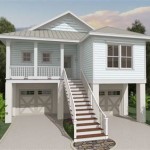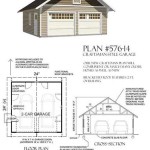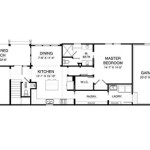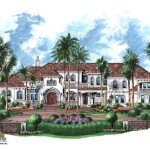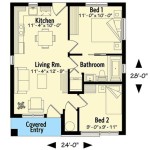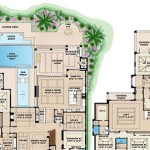Detached Garage With Bonus Room Plans: Expanding Functionality and Value
Detached garages have evolved beyond simple vehicle storage. Modern designs often incorporate bonus rooms, offering versatile spaces that can be adapted for various purposes. Plans for a detached garage with a bonus room require careful consideration of factors such as spatial needs, local building codes, structural integrity, and aesthetic integration with the existing property.
The addition of a bonus room above a detached garage can significantly increase a property’s value and usability. This space can serve as a home office, guest suite, hobby room, recreation area, or even a rental unit, depending on zoning regulations and owner preferences. The design process involves determining the intended use of the bonus room early on, as this will influence the layout, size, window placement, insulation requirements, and necessary utilities.
Developing suitable plans requires expertise in architectural design, structural engineering, and local building codes. Homeowners should consult with qualified professionals to ensure the project is not only aesthetically pleasing and functional but also safe and compliant with all applicable regulations. Failing to do so can lead to costly revisions, delays, or even legal issues.
Key Point 1: Planning and Design Considerations
The initial planning phase is crucial for the success of a detached garage with a bonus room project. A thorough assessment of needs, site conditions, and budget constraints is essential. Consider the following elements:
Intended Use: The primary purpose of the bonus room dictates its design. A home office requires adequate lighting, electrical outlets, and potentially soundproofing. A guest suite necessitates a bathroom and possibly a kitchenette. A recreation room may benefit from ample space for entertainment equipment and activities.
Size and Layout: The size of the garage and bonus room must be proportioned correctly to the property. The layout should optimize space utilization and traffic flow. Consider the placement of stairs, windows, doors, and any built-in features.
Aesthetic Integration: The design of the new structure should complement the existing home's architectural style. This includes matching roofing materials, siding, window styles, and paint colors. A cohesive design enhances curb appeal and property value.
Site Conditions: Evaluate the site's topography, soil composition, drainage, and proximity to property lines. These factors influence the foundation design, grading, and potential for water runoff.
Budget: Establish a realistic budget that accounts for all costs, including design fees, permits, materials, labor, and contingencies. It is essential to obtain multiple quotes from contractors and suppliers to ensure competitive pricing.
Building Codes and Permits: Consult with local building officials to understand all applicable codes and regulations. This includes requirements for setbacks, height restrictions, fire safety, accessibility, and energy efficiency. Obtain all necessary permits before commencing construction.
Accessibility: Consider accessibility requirements, especially if the bonus room is intended for use by individuals with mobility limitations. This may involve incorporating ramps, wider doorways, and accessible bathroom fixtures.
Energy Efficiency: Implement energy-efficient design strategies to reduce heating and cooling costs. This includes using high-performance insulation, energy-efficient windows and doors, and properly sealing air leaks.
Future Expansion: Consider the potential for future expansion or modifications to the structure. This may involve designing the foundation and framing to accommodate additional levels or rooms.
Key Point 2: Structural Integrity and Construction
Ensuring the structural integrity of a detached garage with a bonus room is paramount. The design must account for the added weight and loads associated with the additional living space. Professional structural engineering is crucial to guarantee safety and longevity.
Foundation: The foundation must be designed to support the entire structure, including the garage below and the bonus room above. Common foundation types include concrete slabs, crawl spaces, and full basements. Soil testing is essential to determine the appropriate foundation design.
Framing: The framing of the garage and bonus room must be robust enough to withstand wind loads, snow loads, and seismic activity. Common framing materials include wood and steel. The framing should be designed and constructed in accordance with applicable building codes.
Roofing: The roofing system must be durable, weather-resistant, and properly installed to prevent leaks and water damage. Common roofing materials include asphalt shingles, metal roofing, and tile roofing. Proper ventilation is essential to prevent moisture buildup in the attic space.
Staircase: The staircase leading to the bonus room must be designed and constructed in accordance with building codes. This includes requirements for rise, run, headroom, and handrails. Consider the placement of the staircase to optimize space utilization and traffic flow.
Utilities: The garage and bonus room will require electrical, plumbing, and HVAC systems. These systems must be designed and installed by qualified professionals in accordance with applicable codes. Consider the placement of electrical outlets, lighting fixtures, plumbing fixtures, and HVAC equipment to meet the needs of the intended use of the space.
Insulation: Proper insulation is essential for maintaining comfortable temperatures and reducing energy costs. Insulate walls, floors, and ceilings to minimize heat loss and heat gain. Consider using high-performance insulation materials with high R-values.
Ventilation: Adequate ventilation is crucial for preventing moisture buildup and maintaining indoor air quality. Install ventilation fans in bathrooms and kitchens to remove excess moisture. Ensure proper ventilation in the attic space to prevent condensation and mold growth.
Fire Safety: Implement fire safety measures to protect occupants in the event of a fire. This includes installing smoke detectors, carbon monoxide detectors, and fire extinguishers. Consider installing a sprinkler system if required by local building codes.
Key Point 3: Interior Finishes and Functionality
The interior finishes and functionality of the bonus room significantly impact its usability and appeal. Careful selection of materials, fixtures, and appliances is essential to create a comfortable and functional space.
Flooring: Choose flooring materials that are durable, easy to maintain, and aesthetically pleasing. Common flooring options include hardwood, laminate, carpet, tile, and vinyl. Consider the intended use of the space when selecting flooring materials.
Walls and Ceilings: Finish the walls and ceilings with drywall, plaster, or other suitable materials. Apply paint, wallpaper, or other decorative finishes to create the desired aesthetic. Consider adding decorative trim and molding to enhance the visual appeal of the space.
Lighting: Install a combination of ambient, task, and accent lighting to create a well-lit and functional space. Consider using energy-efficient LED lighting fixtures to reduce energy consumption. Install dimmer switches to control the intensity of the lighting.
Windows and Doors: Choose energy-efficient windows and doors that provide adequate natural light and ventilation. Consider the placement of windows and doors to optimize natural light and views. Install window coverings such as blinds, shades, or curtains for privacy and light control.
Kitchenette (Optional): If the bonus room is intended as a guest suite or rental unit, consider installing a kitchenette with a sink, refrigerator, microwave, and cooktop. Ensure that the kitchenette meets all applicable building codes and regulations.
Bathroom (Optional): If the bonus room is intended as a guest suite or rental unit, install a bathroom with a toilet, sink, and shower or bathtub. Ensure that the bathroom meets all applicable building codes and regulations. Consider installing accessible bathroom fixtures if required.
Storage: Incorporate ample storage space to keep the bonus room organized and clutter-free. Consider installing built-in cabinets, shelves, and closets. Use vertical space to maximize storage capacity.
HVAC: Install a heating, ventilation, and air conditioning (HVAC) system to maintain comfortable temperatures in the bonus room. Consider using a ductless mini-split system for individual temperature control. Ensure that the HVAC system is properly sized to meet the heating and cooling needs of the space.
Technology: Incorporate technology features such as Wi-Fi connectivity, cable or satellite TV, and smart home devices. Consider installing a home theater system with a projector and surround sound system.
Careful consideration of these planning, structural, and interior design elements will contribute to a successful detached garage with bonus room project, enhancing property value and providing a versatile and functional space for years to come.

G550 28 X 30 9 Garage Plans With Bonus Room Sds

Garage Plans With Bonus Room

Plan 76019 Garage Apartment Two Car Rustic With Storag

50 Garage Bonus Room Layout Ideas Carriage House Plans Apartment

Garage Plans With Bonus Room

Detached Garage With Bonus Space Galore 23067jd Architectural Designs House Plans

G394 30 X 50 10 Detached Garage With Bonus Room

721 Sq Ft 2 Car Detached Garage Plan With Side Porch And 343 Bonus Space Above 135019gra Architectural Designs House Plans

Garage Plans With Bonus Room

Traditional Two Car Garage With Bonus Room 1222

